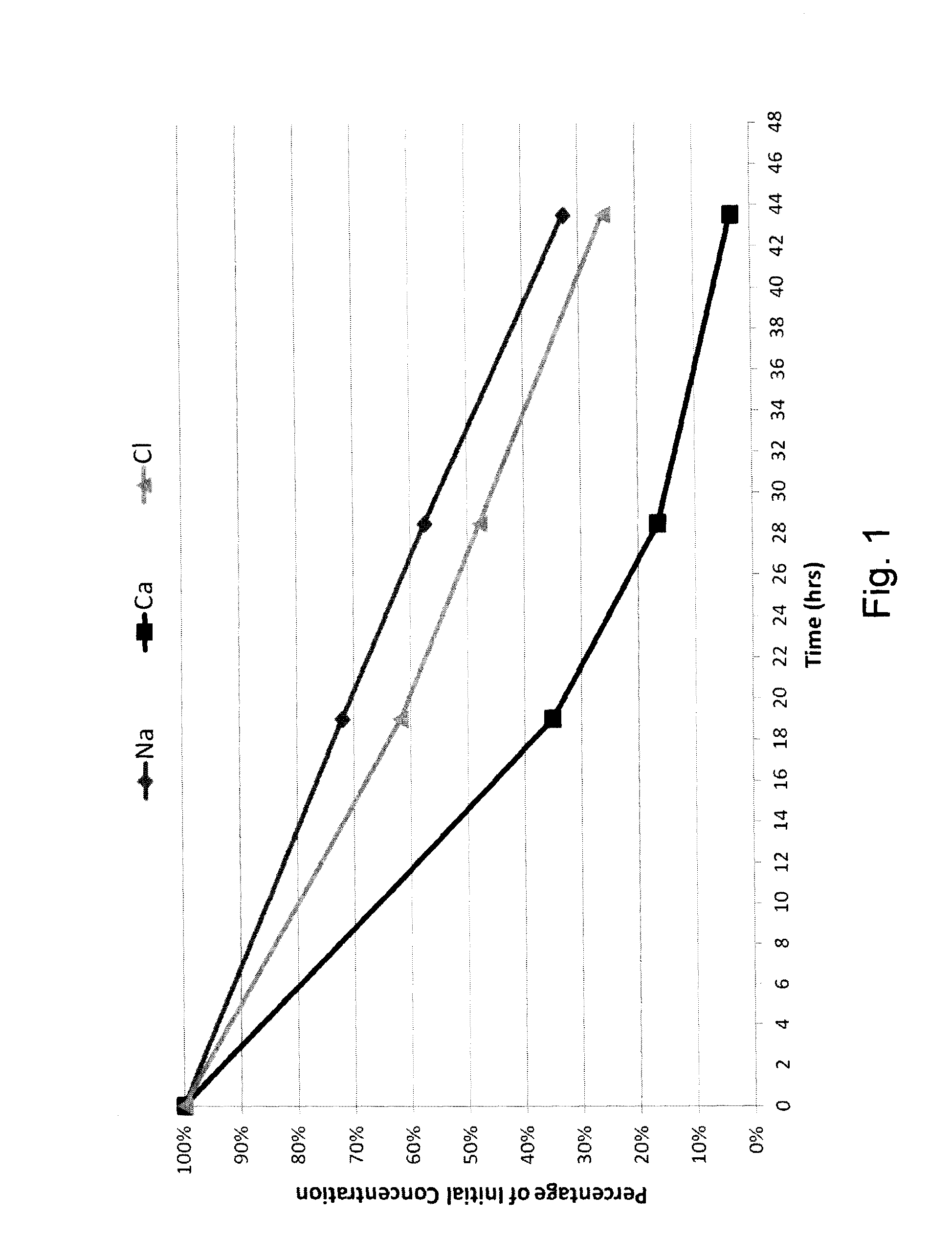Resilient Ion Exchange Membranes
a technology membranes, applied in the field of ion exchange membranes, can solve the problems of membrane failure, membrane fracture and failure, brittleness and non-resiliency, and consequent fractur
- Summary
- Abstract
- Description
- Claims
- Application Information
AI Technical Summary
Benefits of technology
Problems solved by technology
Method used
Image
Examples
example 1
Preparation of an Exemplary Cation Exchange Membrane
[0068]A solvent solution was prepared by mixing together 152 g of dimethylacetamide with 152 g of tributylamine. 304 g of the hydrophilic monomer 2-acrylamido-2-methyl-1-propanesulfonic acid (AMPS) was mixed into the dimethylacetamide / tributylamine solvent solution and dissolved. 228 g of hydrophobic cross-linking polyurethane oligomer diacrylate was diluted with 228 g of comonomer hexanediol diacrylate, and then was added to the solvent solution already containing the AMPS component. The mixture was stirred to form a homogenous solution after which, 15 g of the photoinitiator Irgacure® 2959 (Irgacure is a registered trademark of CIBA Specialty Chemicals Corp., Tarrytown, N.Y., USA) was added and dissolved in the solvent mixture comprising the hydrophilic monomer and the hydrophobic cross-linking oligomers and comonomers. The complete homogenous solution was applied onto a woven fabric comprising SEFAR® PET 1500 having the followin...
example 2
Preparation of an Exemplary Cation Exchange Membrane Using a Single Solvent System
[0073]304 g of AMPS was mixed with 304 g of tributylamine solvent (1:1). It was not possible to completely dissolve AMPS in the tributylamine solvent i.e., this mixture did not form a homogenous solution. Subsequently, 200 g of AMPS was mixed with 304 g of tributylamine solvent (1:1.5). It was not possible to completely dissolve AMPS in the tributylamine solvent i.e., this mixture did not form a homogenous solution. Accordingly, it was determined that preparation of a cation exchange membrane having AMPS as the hydrophilic ion exchange component required the addition of dimethylacetamide to the solvent solution.
example 3
Preparation of an Exemplary Anion Exchange Membrane
[0074]To 360 g of hexanoic acid was added 201 g of the hydrophilic monomer 3-methacryloylaminopropyl trimethylammonium chloride (MAPTAC) and was gently stirred until the MAPTAC was dissolved. 394 g of the hydrophobic cross-linking oligomer polyurethane oligomer diacrylate was diluted with 394 g of hydrophobic cross-linking comonomer hexanediol diacrylate, and then stirred into the MAPTAC solution. After the mixture had dissolved into a homogenous solution, 15 g of Irgacure® 2959 was then stirred into and dissolved in the homogenous solution. The homogenous solution was applied onto a woven fabric comprising SEFAR® PET 1500 having the same properties disclosed in Example 1. Excess solution was removed from the substrate by running a roller over the substrate with care being taken to exclude air bubbles from the substrate. Excess homogenous solution was removed from the woven polyester cloth by running a roller over the fabric with ca...
PUM
| Property | Measurement | Unit |
|---|---|---|
| thickness | aaaaa | aaaaa |
| thickness | aaaaa | aaaaa |
| size | aaaaa | aaaaa |
Abstract
Description
Claims
Application Information
 Login to View More
Login to View More - R&D
- Intellectual Property
- Life Sciences
- Materials
- Tech Scout
- Unparalleled Data Quality
- Higher Quality Content
- 60% Fewer Hallucinations
Browse by: Latest US Patents, China's latest patents, Technical Efficacy Thesaurus, Application Domain, Technology Topic, Popular Technical Reports.
© 2025 PatSnap. All rights reserved.Legal|Privacy policy|Modern Slavery Act Transparency Statement|Sitemap|About US| Contact US: help@patsnap.com

